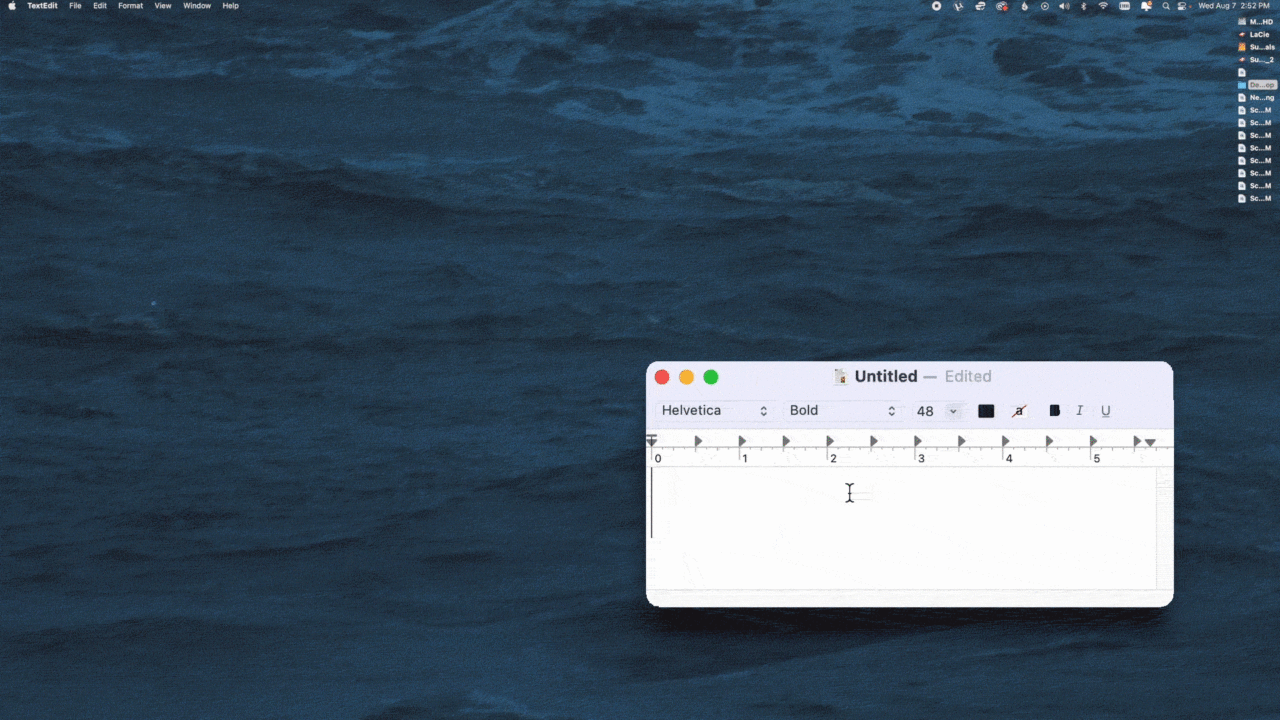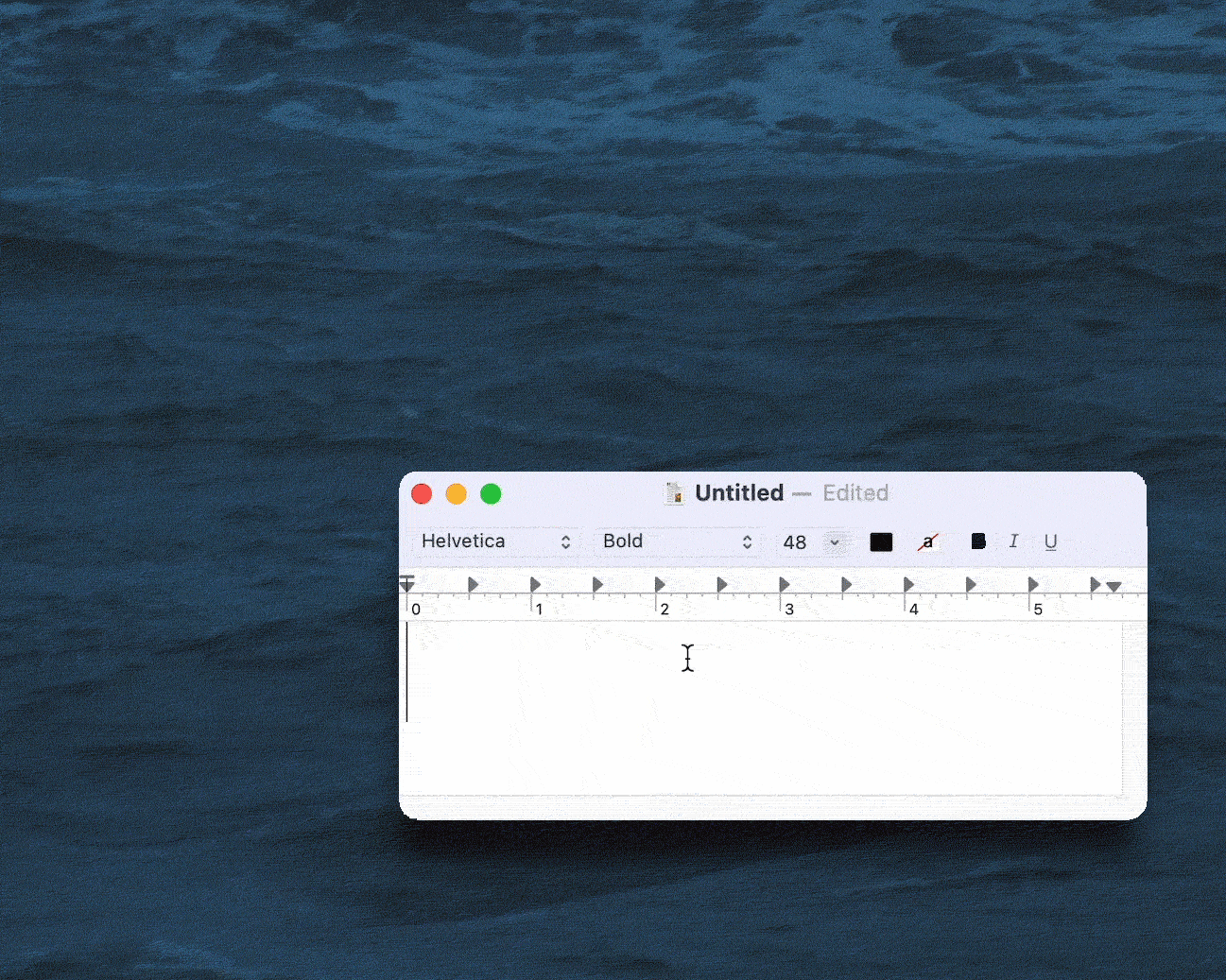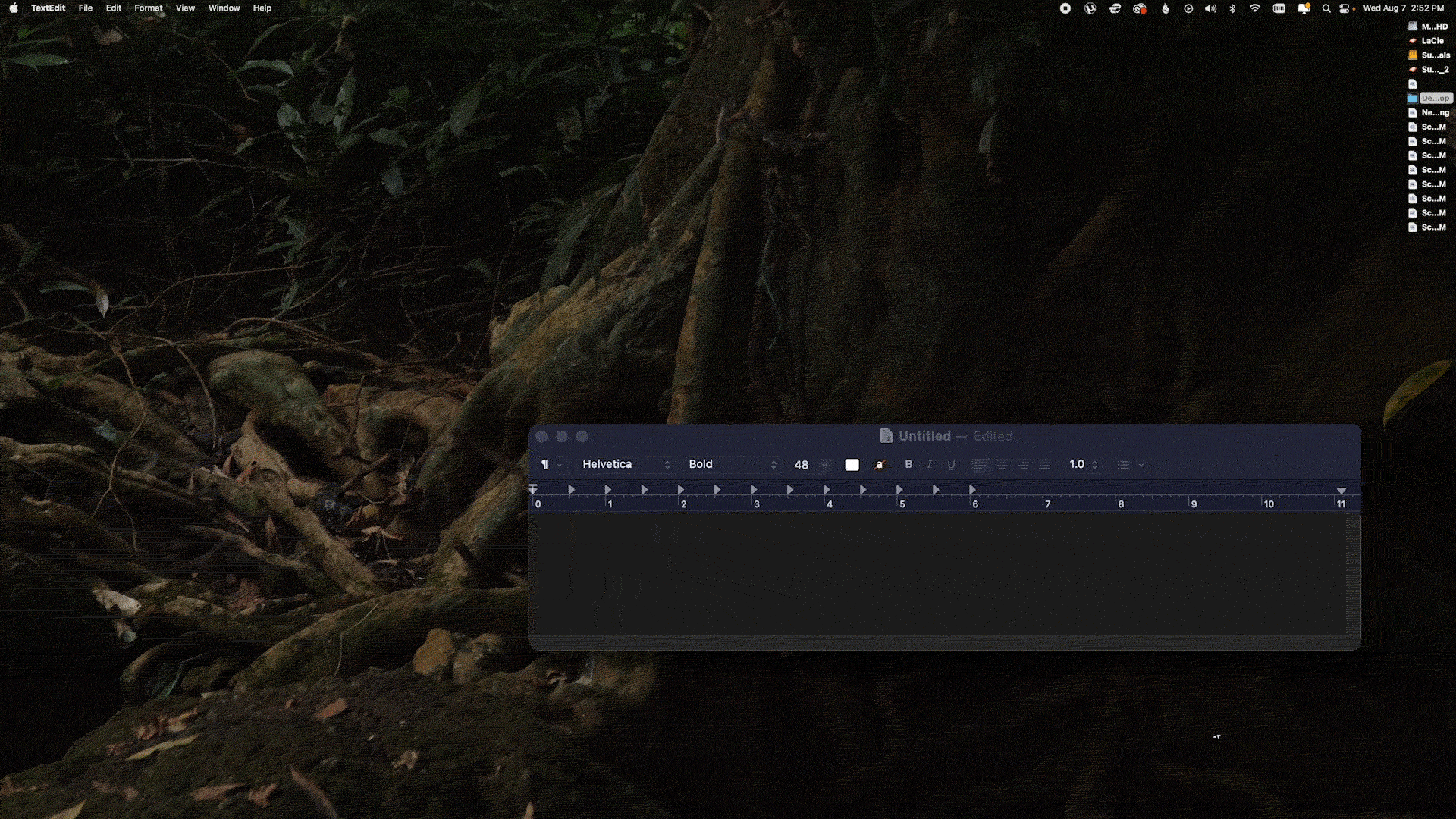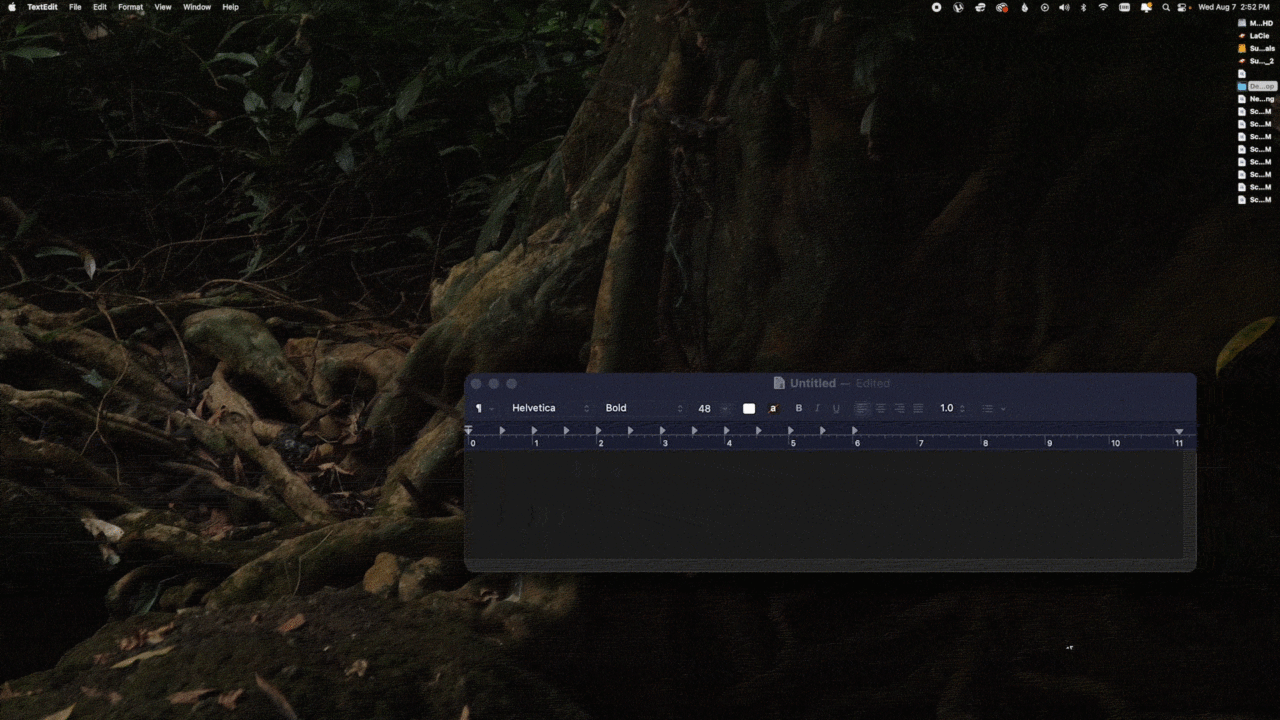

Film courtesy of Suneil Sanzgiri
WORDS BY TYLER MCBRIEN
José Rodríguez was already back home in Costa Rica by the time he heard the good news.
Back in March 2023, Rodríguez, a 28-year-old human rights lawyer and the Latin America front coordinator for World’s Youth for Climate Justice, had just returned from a whirlwind trip to New York. There, he and other young activists had lobbied diplomats at the United Nations (U.N.) General Assembly to vote for a resolution asking judges at the International Court of Justice (ICJ) to weigh in on what many see as the most pressing questions of our time: What are countries’ legal obligations to protect the climate for current and future generations? And what do states most responsible for climate change owe those most affected by it?
With the big vote still pending, Rodríguez’s homecoming was not a restful one. “To the very last minute, we were unsure if it was going to pass,” he remembered. Though it seemed they had enough delegates for the simple majority needed to carry the day, Rodríguez spent the precious days and hours before the vote shoring up as much support as possible.
Ultimately, they succeeded. On March 29, 2023, the UNGA adopted resolution A/77/L.58 requesting an advisory opinion from the ICJ on the obligations of states with respect to climate change. “It was just surreal watching it,” Rodríguez recalled.
What began in 2019 as an idea hatched by law students in a classroom at the University of the South Pacific in Fiji ended as “a diplomatic feat of Herculean proportions,” according to lawyers for Vanuatu, which had spearheaded the legal campaign.
It was a remarkable David-and-Goliath story, but Rodríguez and his fellow climate activists were not ones to rest on their laurels. A clear, authoritative opinion would acknowledge the enormous impacts of the climate crisis on all areas of the law, answer thorny questions of causality and compensation at the heart of climate reparations, and pioneer a novel legal understanding of intergenerational equity. But the opinion could just as easily disappoint and evade these tough questions altogether. “Of course we were very happy, but we just went on planning for the next phase,” Rodríguez said. “We don’t want an advisory opinion just for the sake of it. We want the best possible outcome. So how do we make this happen?”
Oral proceedings for the advisory opinion begin today, with the decision expected to follow sometime mid-next year. But after getting their case to the highest court in the world, the young activists, many of whom live in the Global South, now worry that the opinion they fought so hard for will be too narrow. To make matters worse, the ICJ, as a court of interstate dispute, leaves out voices like Rodríguez’s by design—excluding the people who are the very reason for the case in the first place.
“Protesting and shouting on the streets is very important, but young people also need to be in the rooms where decisions are made. They need to be in the halls of power and justice.”
“Unfortunately, only governments and a select group of elites have been part of the drafting process so far,” said Vishal Prasad, director at the Pacific Islands Students Fighting Climate Change. Still, he and his fellow activists saw in this next phase—the oral proceedings—an opportunity to democratize the Court, so that the decisions are “reflective of what people are saying on the ground, because this will define climate law for decades to come.”
Faced with the limits of law, Rodríguez, Prasad, and their fellow youth climate leaders are turning to film, public theater, and other innovative art to reinsert themselves into the process, so that the people most affected and least responsible for the climate crisis have a say in its remedies. As Prasad told me over a Zoom call from his home in Fiji, “Protesting and shouting on the streets is very important, but young people also need to be in the rooms where decisions are made. They need to be in the halls of power and justice.”
“This is a historical, transformational opportunity to shape international law for generations to come,” Prasad added. The activists intimately know that the master’s tools will never dismantle the master’s house—but maybe they can transform it.

The Peace Palace in The Hague is an august neo-Renaissance marvel and the former headquarters of the League of Nations. It’s also a hulking metaphor for the archaic institution it houses—the ICJ—and an odd place for young activists from the Global South to mount a campaign for climate justice.
To illustrate the ICJ’s old ways of doing things, Prasad offered a case in point: Anyone wishing to submit a written statement to the Court had to print out 30 hard copies and hand-deliver them to The Hague. To Prasad, who lives thousands of miles away, it was distressing—not to mention a deeply ironic source of fossil fuel pollution, the cause of the very crisis being ruled on.
And yet, if the young activists would be heard anywhere, they wagered it would be at the world’s apex court, in all of its prestige and legitimacy. “It’s this beautiful colonial building, which was created largely to maintain and institutionalize all of these enlightenment ideas that helped to displace people from their land and in which you have the origins of the climate crisis in the first place,” observed Anjli Parrin, director of the Global Human Rights Clinic at the University of Chicago Law School who has worked closely with the youth climate activists. “There are some really powerful lessons in saying these institutions aren’t designed for us, and yet they are the institutions which we are going to rely upon to advance justice for us.”
Prasad was alive to these contradictions and shortcomings from the very start of the campaign. “We definitely knew this would be the process,” he said. “It’s very state-focused, and international law in general is state-led. But we wanted to be a bit radical in our approach. Try to change the court by bringing this new innovative way of interacting with it.” The Court’s official procedures may exclude them, but even a fortified palace has its weak points.
Though their aim was unprecedented, their tactics didn’t have to be. “Good social justice lawyers have always viewed the courtroom as just one tool in their toolbox,” Parrin said. “And the courtroom is a space of theater and performance just as much as any other forum, right?” They looked at past campaigns in which civil society successfully pressured the U.N. and ICJ, like the 1996 advisory opinion on the threat of nuclear weapons, when activists led “a massive letter-writing campaign and filled the Court to the brim, like that Harry Potter movie when the letters come and come and come,” Rodríguez said.
“There are some really powerful lessons in saying these institutions aren’t designed for us, and yet they are the institutions which we are going to rely upon to advance justice for us.”
“There’s a blurry line between law and politics,” Rodríguez added. “What decides the legal outcome is not only legal reasoning. There’s all of this other more emotional, more political, more narrative influence.” Judges should be balanced and impartial, but they’re also human beings with children and grandchildren. The judges will hear us, the young activists thought, as long as we can get them to listen. If they couldn’t take the stand in court to bear witness, they would just have to make their own witness stand.
As oral proceedings open today at the ICJ, a coalition of organizations including Pacific Islands Students Fighting Climate Change and World’s Youth for Climate Justice will raise the curtain on a parallel set of proceedings throughout The Hague. One of those efforts is The Witness Stand, a collection of hundreds of video testimonies installed throughout the Peace Palace. “It’s also a digital platform that is accessible to anyone in the world,” said Rodríguez. “Wink wink, judges of the International Court of Justice.”
“I think implicit in that message to the judges is the idea that we, the young people, we, the current generation and the future generations, are watching you. You are not the only people who are doing the judging. We are judging your process too,” said Parrin.
The mass mobilization also includes yesterday’s opening ceremony, which was a celebration of culture as much as a somber reminder of how climate change endangers it, as well as a People’s Assembly, a People’s Museum, vigils, and other art, including a short film by Suneil Sanzgiri, which premiered at a museum exhibition in Munich in October.
The film opens with grainy black-and-white footage of a tropical island, and a staid document header with the U.N. logo appears overlaid with the words, “Request for an advisory opinion of the International Court of Justice on the obligations of States in respect of climate change.” We see a series of excerpts from the document with all but the first few words scratched out: Recognizing. Recalling. Emphasizing. Noting with profound alarm. They’re verbs, but weak ones.
Archival footage rolls, first soldiers in camouflage uniforms on destroyers adrift in the ocean then older white men in stately robes in mahogany courtrooms, until we hear a voice: “One thing we know to be true is that we are not all equals in the eyes of the law.” It’s Joseph Sikulu, a young, queer climate activist from Tonga. We continue to hear testimony from other young Pacific Islanders, interrupted only by a series of open questions. The inquiries are deeper and more emotional than the narrow questions of legality more commonly asked at The Hague, but they interrogate the moral values and principles that undergird the ICJ’s eventual opinion and the entire legal process: What is owed? Whose knowledge matters? And who gets to judge the past and the future?
All of that is now up to the ICJ judges to decide; young climate activists are only demanding that the Court doesn’t render that decision alone.
A Climate Coup Swarms the Peace Palace As U.N. ICJ Case Begins
